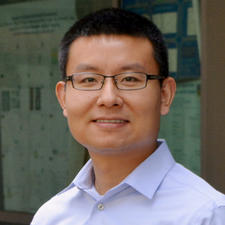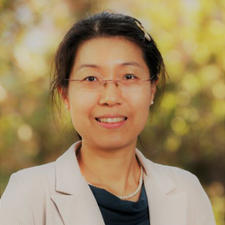UC Riverside chemical and environmental engineering professor Haizhou Liu has received a $400,000 grant from the National Science Foundation to develop use of a type of ultraviolet light known as vacuum UV light to destroy “forever chemicals” in water. Yujie Men, an assistant professor of chemical and environmental engineering, will co-direct the project.
Per- and polyfluoroalkyl substances, or PFAS, are manufactured chemicals that have been used in a variety of industries. The exceptional stability, oil- and water-repelling capabilities, and other properties that have made them so useful in consumer products, electronics manufacturing, and firefighting applications also makes them nearly impossible to break down when they inevitably contaminate drinking water and enter living tissues of plants, animals, and people.
Adsorption, ion exchange, and membrane filtration are among the technologies used to treat PFAS in water, but none of these approaches destroys the PFAS compounds altogether and are expensive to use. Thus, their widespread adoption for large-scale water treatment has been insufficient.
Ultraviolet, or UV, light is already widely used to break down certain contaminants and kill microbes in drinking water. The UV light used for this purpose usually has a wavelength of 254 nanometers. Vacuum UV light emits photons with a wavelength of less than 200 nanometers. The light at the shorter wavelength is very energetic and can directly photolyze water molecules to generate highly reactive types of molecules that destruct PFAS without no harmful byproducts. Preliminary data from Liu’s lab shows very promising degradation efficiency in comparison to traditional UV methods.
Liu and Men will do lab experiments and kinetic computer modelling to understand how PFAS react to vacuum UV light. They believe their efforts will help develop an effective and affordable way to destroy PFAS in large-scale water treatment systems.
The research team is very interested in collaborating with industry partners to further develop the technology. Please email Professor Liu for more information: haizhou@engr.ucr.edu.
Thumbnail photo: Ethan Sykes on Unsplash






